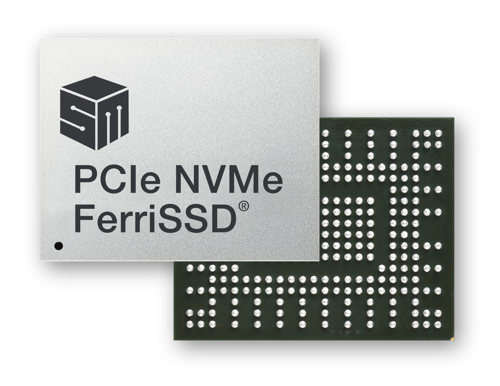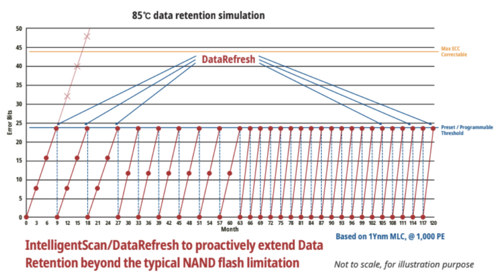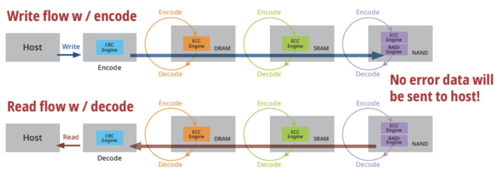Whether in shops and malls, airports and train stations, public buildings and spaces, stadiums and elsewhere, the demands made of digital signage are changing fast.
This means that manufacturers of digital signage equipment are having to develop new and improved designs to meet rising expectations for the amount of information their products are required to display, the speed with which it is updated, and the quality of the viewing experience.
Digital signage is evolving, becoming more and more computer-like: connected, smart, configurable, and capable of rendering every type of high-definition content, up to 4K video.
Since digital signage is now required to display data-intensive content, the architecture of the equipment is evolving. Today’s digital signage equipment must be able to download huge data files – a single 4K video clip lasting one minute might be as large as 6GB - to store multiple separate pieces of content locally, and to serve up the content from local storage. This architecture avoids any risk of buffering, distortion or picture break-up caused by a slow network connection to content stored remotely.

Above: The PCIe FerriSSD is a complete date storage solution
While the design of digital signage equipment might be new, some features have not changed: The service, maintenance and repair of installed units are expensive, so digital signage equipment is required to operate reliably over a long lifetime; digital signage is often mounted outdoors, so it must also tolerate extreme hot and cold temperatures; and viewers expect to see perfect content with no corruption or impairment of the displayed information.
Streamed, high-definition video content calls for high data-transfer rates between the system components and as the space inside the enclosure is often restricted, so the system components need to be small.
These features place special demands on the local storage device embedded in digital signage equipment. Of course, data storage – in the form of a Hard Disk Drive (HDD), Solid-State Disk (SSD) or memory card – is a universal feature of consumer products such as PCs, tablets and smartphones.
But these devices do not impose the same requirements as digital signage does – they are typically only required to operate for 1-3 years in mild temperatures, and users will tolerate software or hardware operating errors or malfunctions.
In addition, maintenance and repair costs are negligible, since most users expect to replace their device with a newer product before it reaches the end of its useful life.
By contrast, the storage device embedded in a digital signage content player should provide the following features:
- High sequential Read and Write speeds, to allow for fast uploading of new content and high-speed streaming of data-intensive content such as 4K video;
- Tolerance of high and low ambient temperatures, to support operation outdoors;
- Reliable storage lasting for many Programme/Erase cycles; and
- A small board footprint
Consumer-grade storage devices such as eMMC cards or consumer SSDs are not able to offer this combination of features. Therefore system designers are now turning to a new generation of robust, industrial-grade SSD products which offer higher data-transfer rates, longer lifetime, better reliability and higher data integrity, combined with data storage capacity up to 480GB – sufficient for even the most data-intensive digital signage applications.
PCIe FerriSSD for digital signage
PCIe FerriSSD is a family of complete SSDs which combine proven controller technology, NAND Flash and passive components in a single, small BGA package with a footprint of 16mm x 20mm (Figure 2).
Among the features that make the PCIe FerriSSD suitable for digital signage equipment include the PCIe Gen3 interface which provides two or four high- speed lanes to the host, helping it to achieve very high performance. Offering a sequential Read speed of up to 2.1GB/s and sequential Write speed of up to 650MB/s, the PCIe FerriSSD has been designed to be fast enough to support streaming of 4K video simultaneously to multiple digital display screens.

Above: Silicon Motion’s IntelligentScan & DataRefresh function detects at-risk cells before their data is lost
This performance is as much as 15 times faster than that of a conventional HDD, and three times faster than that of an SSD with a SATA interface and because the PCIe FerriSSD is a complete, embedded SSD including comprehensive NAND Flash controller firmware, it is also easier for the designer to integrate into a digital signage equipment design, and so helps to reduce time-to-market.
The PCIe FerriSSD also protects the manufacturer from NAND technology migration concerns and is continually being upgraded as new, higher-density Flash products become available.
While the PCIe FerriSSD offers the level of performance required in digital signage equipment, how does the PCIe FerriSSD address the key requirements of digital signage applications – for reliable operation over a long lifetime, and for flawless data read and write operations?
Long lifetime with TLC Flash
To maximise data capacity and provide a competitive cost in pounds-per-gigabyte, the PCIe FerriSSD product uses the market’s latest multi-layer ultra-high density TLC NAND Flash. In conventional consumer-grade SSD designs, TLC Flash is more prone to premature memory cell wear- out than earlier MLC and SLC Flash technologies.
In response, Silicon Motion has developed IntelligentScan & DataRefresh technology which allows it to take advantage of the higher density and lower cost-per- gigabyte of TLC Flash, while maintaining long data retention and long operating lifetime.
This technology protects the PCIe FerriSSD’s data storage capability even when the product is used at high temperatures.
The IntelligentScan & DataRefresh function achieves this by identifying at-risk memory cells and refreshing the data stored in them. The risk of loss of stored data increases as:
- the aggregate number of P/E cycles increases
- the ambient temperature rises
In general, the higher the ambient working temperature, the shorter the retention capability of the NAND Flash cells. The PCIe FerriSSD incorporates a Silicon Motion monitoring algorithm which logs cumulative junction temperature readings, the number of P/E cycles, SSD power-on time, and other essential reference points to dynamically select and prioritize which NAND cells to DataRefresh, and when. IntelligentScan & DataRefresh work together to significantly extend the retention capability before data becomes unrecoverable.
It is an inherent property of the NAND Flash storage medium in an SSD that soft or hard bit errors may occur during Read or Write operations. Left uncorrected, such errors could corrupt the data stream from a content server to a digital sign, impairing the viewing experience. Since people expect broadcast TV-quality content in digital signage, the equipment’s SSD must ensure that bit errors are reliably eliminated.
Conventional SSDs attempt to achieve this by employing error detection and correction circuitry at the far ends of the data path: at the front-end host interface and at the back-end NAND interface. This omits an important gap at the internal SRAM and/or DRAM transfer buffers, and other circuit paths.
Data errors that occur between the NAND interface and the host, such as soft error bits, are often extremely difficult to identify and duplicate. While conventional SSDs may have some internal error detection circuitry, the new PCIe FerriSSD storage solutions incorporate full data recovery engines to provide enhanced data integrity throughout the entire host-to-NAND-to-host data path.
The PCIe FerriSSD data recovery algorithm can effectively detect any error in the SSD data path, including hardware errors, firmware errors and memory errors arising in SRAM, DRAM or NAND. The PCIe FerriSSD implements an additional redundant back-up in NAND – the SMI Ferri Group Page Raid – which reinforces the protection against the risk of uncorrectable errors in the NAND storage medium (see Figure 4). Should the PCIe FerriSSD identify any error that cannot be self-corrected, it will pass an error flag to the host for appropriate recovery processing.
By contrast, conventional SSDs pass faulty data to the host without an error flag, exacerbating the initial problem by failing to alert the host to the need for error recovery processing.
Read disturbance
The PCIe FerriSSD also protects against the risk of data loss or corruption caused by the Read disturbance effect. Performing an excessive number of read cycles from a cell can cause unintended over-charging of adjacent cells, leading to unrecoverable bit errors, a phenomenon known as Read disturbance. FerriSSD products avoid potential Read disturbance errors by performing periodic IntelligentScan & DataRefresh operations on NAND blocks that undergo repetitive Read cycles.

Above: End-to-end data path protection safeguards data integrity at every data transfer point inside the SSD
The PCIe FerriSSD firmware automatically manages DataRefresh cycles and processing time to minimize data loss due to the impact of intensive Read operations on the NAND Flash storage medium.
Conclusion
People have high expectations of digital signage, whether they are travelling, shopping or socialising. They expect the information that they see to be relevant, always up-to-date, and presented in crisp high definition.
The data storage element of digital signage equipment must therefore support high Read speeds for streaming high-definition video and other graphical content, while maintaining high data integrity for excellent picture quality. And the operators of digital signage need to feel confident that their equipment will enjoy a long lifetime and maintain 24/7/365 operation without the need for regular repair or maintenance.
Featuring a high-speed PCIe data interface, the FerriSSD from Silicon Motion offers much faster data access times than conventional SATA SSDs and features advanced technologies to correct for bit errors and to maintain the storage capacity of the NAND Flash array over tens of thousands of P/E cycles.
Author details:
Jason Chien, Product Marketing Director, Silicon Motion













